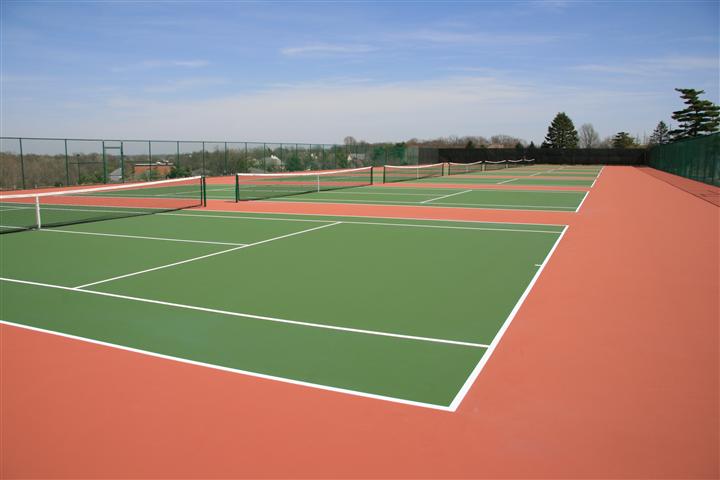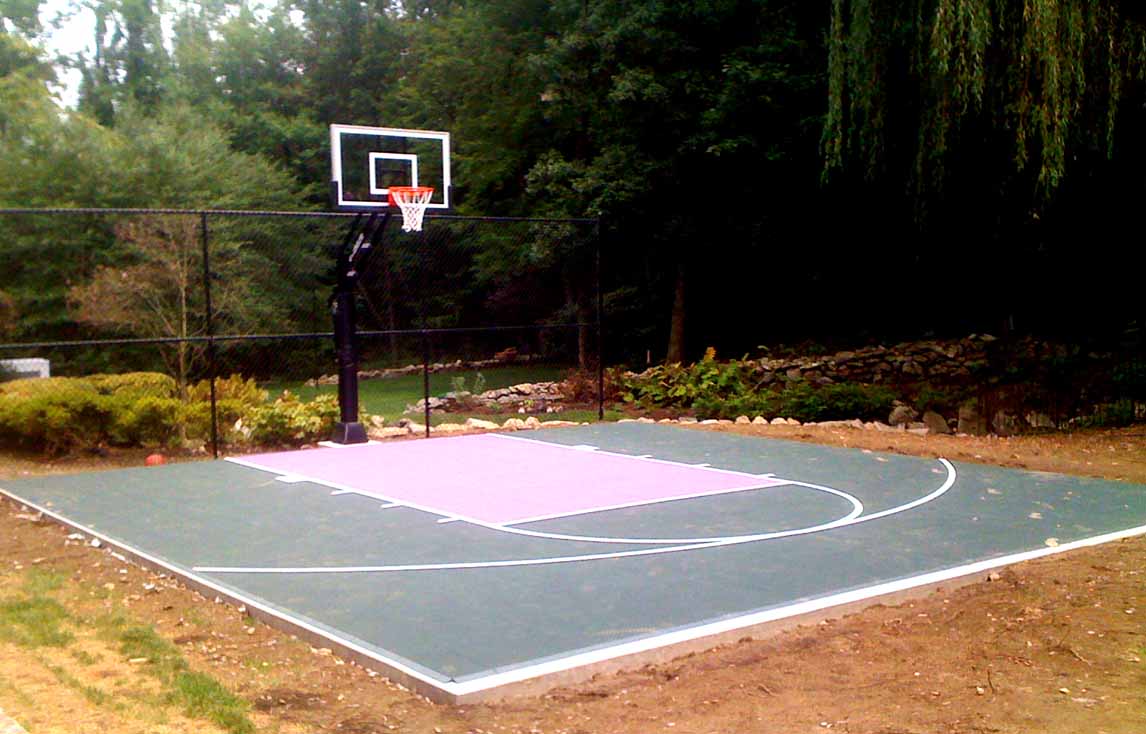We are experts in Tennis court construction,Tennis court resurfacing, maintenance of tennis courts and other sports facilities like Netball court construction,Basketball court construction. Over the course of more than 10 years, we have built thousands of quality tennis courts,netball courts,basketball courts and sports surfaces throughout South Africa.Tennis court construction and Tennis court resurfacing needs an experienced company like us to deliver quality work for long durability of your court.Before Tennis court construction our team designs and recommend the best methods to deliver quality tennis court construction,Tennis court resurfacing or Netball court construction.
What we do
- Tennis court construction
- Netball court construction
- Basketball court construction
- Volleyball court construction
- Multi court construction
- Combi court construction
- Tennis court resurfacing
- Netball court resurfacing
- Basketball court resurfacing
- Tennis court repairs
- Netball court repairs
- Basketball court repairs
- Tennis court fencing
- Tennis court refurbishment
- Netball court refurbishment
- Basketball court refurbishment

We have surfaced and constructed hundreds of tennis courts,netball courts and basketball courts in homes, schools, universities and tennis clubs. We are passionate about the quality of our work,which strictly is Tennis court construction,Tennis court resurfacing,Basketball court construction and Netball court construction
Donnstein Sports are specialists in Tennis court construction,Tennis court resurfacing,Netball court construction,Basketball court construction,Netball court construction and Combi court construction design.We work all over South africa.
From our initial meeting to provide your quotation to carrying out work on site, our Foreman will personally oversee all work carried out until completion, ensuring that first class quality is maintained at all times. There will always be a competent and professional individual available on site to answer any questions you may have about the build. We can provide planning application services if necessary.
We guarantee our construction work for a period of 2 years, all our synthetic surfaces come with a comprehensive warranty, which includes every aspect of the turf, from blades to backing and we have insurance cover up to R2 million. We are fully compliant with our Health and Safety policies, Risk Assessments duties where necessary. References and previous projects are available on request or by appointment.

Maintanance
Donnstein Sport Courts 100% acrylic sport surfaces are very durable and require little maintenance. Basic cleaning will go a long way in preventing premature wear and staining. Here are some tips for maintaining your investment and extending the life of your sport surface between resurfacing cycles.
CLEAN YOUR COURT REGULARLY
Once a month is suggested. Watch for evidence of mold or mildew in shaded areas and corners where organic debris tends to accumulate. Indoor courts require both frequent vacuuming and at least one annual wet cleaning with mild detergent solution and soft bristled equipment. Acrylic coatings do not support fungus growth, so growth of fungus or mold is a result from food and drink spills, decaying matter, or other foreign materials on the surface feeding these organisms.
To remove mold, fungus & other organisms on the acrylic surface use:
- 2 parts household bleach, mixed with 1 part water. Use this solution to treat affected areas. Scrub gently with soft bristled brush and rinse thoroughly after a few minutes.
- Rinsing court with water is usually sufficient for general cleaning. If there are visible stains on the court surface, a mild detergent can be applied prior to gentle scrubbing with a soft bristled brush.
Here is a mild detergent formula:
Combine 4 parts water with 2 parts TSP (trisodium phosphate) and 1 part household beach, when mildew present.
REMOVE STANDING WATER
Rain showers help clean your court. However, dirt accumulates in standing water, leaving stains and piles of debris. This acts like sandpaper under the players’ feet and creates abrasion on the surface. Remove water from birdbaths as often as possible. Court Irrigation systems around the court should not spray on the court.
REMOVE FOREIGN MATTER
Leaves and pine needles not only can stain your court, but also are breeding grounds for mold and mildew. It is especially important to remove leaves in the fall and keep your court free of debris all winter.
USE PROPER EQUIPMENT
Use soft nylon or hair-type brooms for scrubbing your surface. Scrubbing too hard with hard bristles can damage the surface. Water brooms are a great tool for cleaning tennis court surfaces. Some brands, like the Watermiser® Waterbroom, use up to 75% less water than a pressure washer or hose and much less time spent in labor. When using a pressure washer or water broom, limit pressure to 70 p.s.i.
DAMAGE PREVENTION
Post signs or banners near the entrance and throughout the court area with court “rules”. Here are some suggestions:
Use only non-marking tennis shoes on the court surface
No bikes, roller blades, or skateboards (Unless using SkateMaster Surfacing System)
No chewing gum, food, or drinks (other than water) on the playing surface
Do not drag chairs, benches or other items over the surface
Use pads underneath chair legs or equipment that is on the court. Anchor benches or any other permanent fixtures to the surface to prevent damage from sliding or dragging. Protect the surface before driving maintenance vehicles onto the court.
DRAINAGE (OUTDOOR COURTS)
Drain systems are a very important part of tennis court construction. Excess water that flows back onto the court surface or beneath the court can cause problems. Properly installed drainage systems divert water away from the court and should be inspected from time to time.
Look for any evident damage to structures and drain pipes
Clear away any vegetation or debris that may be blocking drains or swales
LANDSCAPING (OUTDOOR COURTS)
Tennis and basketball facilities are designed to be both functional and aesthetically pleasing. Landscape architects take pride in planning such facilities and understand the many benefits of landscaping around them. Here are some tips related to landscaping and protecting the surface.
Keep grass and any other vegetation trimmed and away from the court surface
Minimize the amount of dirt and dust that blows onto the court by mulching planting beds, and planting grass or ground vegetation on any bare areas around the sport facility.
Blow or sweep walks around and leading into the court to minimize tracking and blowing of debris.
Protect the surface from weed killer, fertilizer, insect control products and any other chemicals that may potentially damage the court surfacing system.
Do not over-water vegetation around the court. This can sometimes lead to accumulation of excessive moisture beneath the base. When the court surface heats up from the sun, blisters can form as the moisture evaporates and comes through the acrylic layers.
REPAIR AND RESURFACING
The standard resurfacing cycle for SportMaster acrylic sport surfaces is 5 to 8 years. The asphalt and concrete base of a tennis court, no matter how well built, can exhibit cracking and low spots known as “birdbaths”. There are many factors that can contribute to these problems from ground movement and sinking, to tree roots and improper construction or base mixes. While many of the cleaning and protection functions can be handled by the court owner or maintenance crew, pavement repairs and resurfacing is best handled by a sport surfacing professional.
Our recommendation is to have an annual inspection performed in the spring of the year to evaluate the condition of your facility. Most tennis court builders and surfacing contractors offer free or inexpensive maintenance programs like this to their customers. Here are some of the details they will address in regards to surfacing:
- Overall condition and appearance of the facility
- Surface damage, birdbaths, or cracks that have appeared or reopened
- Performance of the drainage system.
- Areas of premature wear or damage. Identify causes.
- Condition of the surfacing system: texture, fading, stains, mold or mildew growth
- Condition of tennis court accessories: Tennis nets and net posts, windscreen, center strap, etc.
After a period of approximately 5 to 6 years the acrylic coating will begin to fade and will need renewing. When a re-surface is required, the entire court area will be thoroughly pressure washed prior to a new colour being applied. This is necessary as the paint requires a clean debris free surface to be applied to.